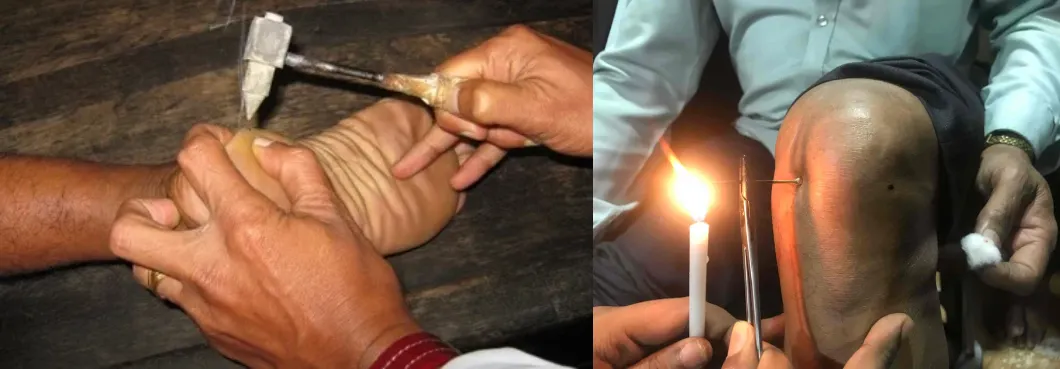
What is Agnikarma?
What are tools of cauterization?
These are different materials subjected to heat and used for therapy in different conditions. The specificity of tools of cauterization depends on the disease status concerned. For superficial conditions, materials used are of minimum latent heat, whereas in deeper tissues used objects are with maximum latent heat. On this concept, in classics, for the diseases of skin surfaces the materials used for Agnikarma are Pippali (Piper longum), Aja Shakrit (feces of Goat), Godanta (Teeth of Cow), Shara (Arrow), Shalaka (Probes), Varti(Wicks), Suryakanta (Variety of stone) etc. Likewise, for the diseases of muscles Loha (Iron), Swarna (Gold), Tamra (Copper) and Kamsya (bronze) are used. In deeper and strong tissues like bones, ligaments, tendons, vessels etc., Madhu (Honey), Guda (Jaggery), Vasa(Fat), Ghrita(Ghee), Taila(Oil), Madhucchishta(Beewax ) are used.
‘Pancha dhatu shalaka’ has been used on a regular basis for the purpose of Agnikarma irrespective of the structure involved or level of the pathology. The Pancha dhatu shalaka is made up of Copper, Brass, Bronze, Lead and Tin (in equal quantity).
What are all the conditions treated with Agnikarma?
- Painful conditions of bones and joints.
- Joint stiffness
- Muscle spasm
- Tennis elbow
- Calcaneal spur
- Plantar fasciitis
- Osteoarthritis
- Headache
- Sciatica
- Early stages of Hernia
- To remove the wart
- To excise the corn from the heel
- To excise the external piles
- Disc prolapse
- Low back ache
- Trigger thumb
- To remove the mucocele of lip, tongue etc
- To excise some extra growths of skin and muscle
- For the excision of fistula tracks, etc.

